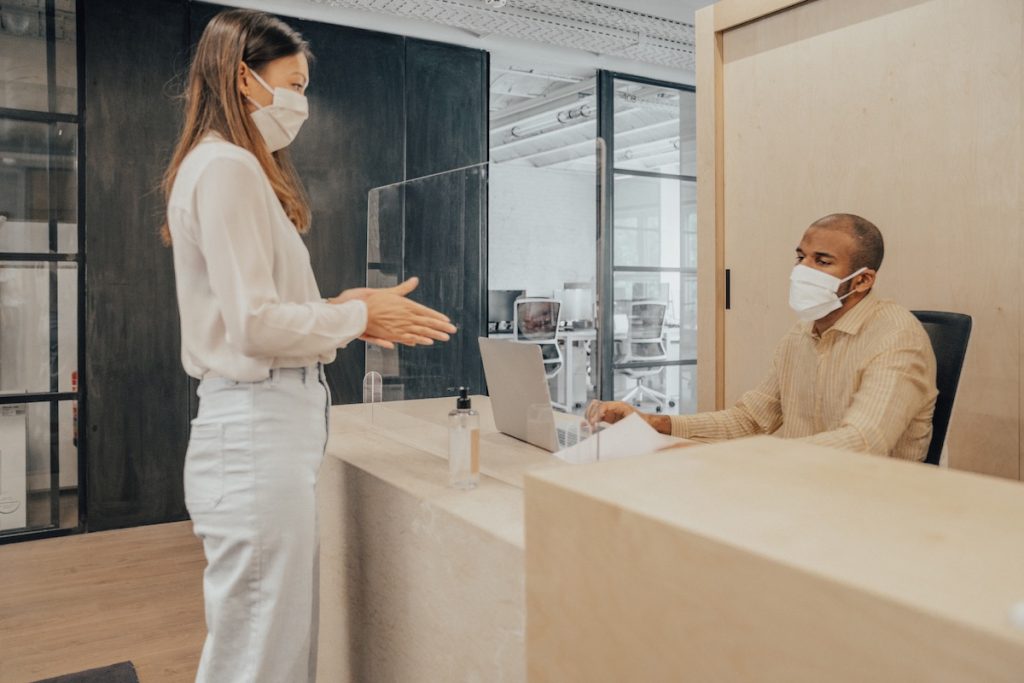
How to prepare your security systems for reopening
By Jeffrey Gallant-Dubois
COVID-19 Updates Features Access Control CCTV COVID-19 editors pick reopening security systems"Now is also the time to consider how to future-proof your business against other interruptions in service continuity. Would your systems be ready if this kind of shutdown happened again?"
 Orbon Alija/Getty Images
Orbon Alija/Getty Images As much of the world moves into the reopening phase of the COVID-19 pandemic, businesses navigating the new normal will have plenty to consider in their plans. Company security should be a critical element of their next steps.
While your company will face its own set of challenges as you reopen, make sure you take the time to evaluate changes you’ve made in the past few months with regard to security. Assess your best practices and any lessons learned as you build your new security plan.
To help, consider these key aspects of your security systems as you form your plan:
Assess components of your security systems
Businesses emerging from this pandemic will surely have questions on how to mitigate health, safety and security risks. If you already have a security system, you can use it to reinforce your policies to avert some of these risks.
For example, access control systems already prevent unauthorized access to your company’s premises. Along with checking your doors and systems after several months away, you can integrate new components with your access control system. Human temperature screening devices and updated visitor management systems can help you pre-screen staff and visitors, providing you a deeper level of insight into who’s accessing your property.
Was this your security team’s first time working remotely? If so, you may have realized how vital remote security management capabilities can be. Securing your business without staff on-site requires cloud-based technologies like video surveillance-as-a-service and intelligent service assurance to monitor your company when you’re not there.
Going remote also raises questions about network security. Cybersecurity threats increased as more employees worked from home, and more attacks could be waiting for you when you reactivate Wi-Fi routers and handle more data on your company network. Ensure you’ve installed the proper tools to track malware events and send unauthorized access alerts to the right people on your team.
Review your security policies and procedures
When you developed your business’s initial response to the pandemic, you probably added or revised policies and procedures to adapt to changing circumstances. Now, as you reopen, consider assessing your policies, particularly from two perspectives:
- Have you ensured new policies and procedures are reflected within your current security systems?
- If you added components or otherwise enhanced your security systems, did you also create or update relevant policies to govern how you’ll use those systems?
For example, if you modified your hours of operation — or closed your business entirely — did you add those modified hours into your access control system? It’s time to revisit your door schedules and visitor access privileges as people return to offices. Whatever changes you made to your system, you should reassess and update your policies to reflect any changes you keep.
For the policies and procedures that governed your systems before the pandemic, did you take time to evaluate them? If not, ask questions about your plan, like:
- Did you develop usage standards for newly installed systems, including how, why and where those systems will be used?
- Do you have audit controls?
- Who has the authority to control and access your systems?
Future security systems require collaboration and continuity planning
Answering questions about your security systems requires physical and IT security teams to work together. Each team has responsibility for certain aspects of your security systems, whether it’s running cables between newly installed components or determining network bandwidth requirements for upgraded cameras. Adding functionality like remote security management will also require closer collaboration to protect your company’s physical and IT assets.
To work well together, physical security and IT teams should designate inter-team liaisons and build a joint plan for how to handle security systems moving forward. It’s important to share information and ensure everyone has an understanding of what the other team needs. That way, you can plan together to reinforce your company’s policies as you reopen.
Now is also the time to consider how to future-proof your business against other interruptions in service continuity. Would your systems be ready if this kind of shutdown happened again? Not all continuity concerns involve disasters, either: What happens if your security lead leaves your organization? Assess your security systems, anticipate these types of changes and build a plan for how you’ll adapt to each of them.
Use this time now to assess your security needs and plan for the future beyond your immediate reopening plans. While there will always be new challenges to overcome, a well-planned security program with the right policies and procedures in place will help your company solve them and adapt to changing circumstances.
Jeffrey Gallant-Dubois is Sales Director at STANLEY Security – Canada.
Print this page
Advertisement
- Clearview AI to end facial recognition services in Canada: privacy commissioner
- Business owners on their own when it comes to mask bylaw enforcement

Leave a Reply